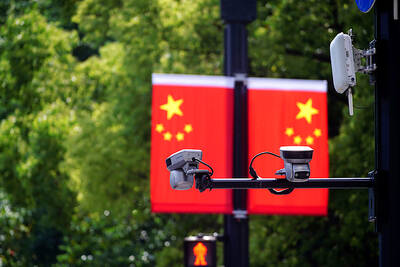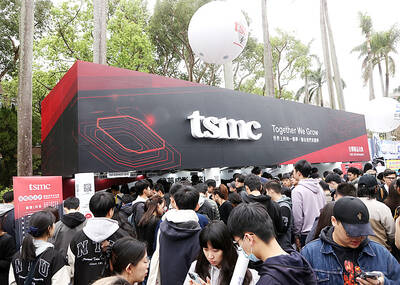An anti-nuclear group is hoping to learn from the creative campaigns organized by one of its Japanese counterparts to help it attract young people to the cause, a spokesman said yesterday.
During a meeting with Japanese environmentalists, Yang Zi-jie of Taiwan No Nuke, a group composed mainly of artists, musicians and students, said he hopes to make it easier for young Taiwanese to participate in the broader anti-nuclear movement.
“Most of the environmental demonstrations in Taiwan are highly regimented and formal, which can sometimes put younger people off,” Yang said.
More creative and flamboyant protests should be organized to encourage young people to “take to the streets in swathes,” he said.
Some of the appeals made by Japan’s anti-nuclear groups in the wake of that country’s post-earthquake radioactive fallout crisis are worth learning from.
“I don’t really expect anything from a rally of any kind; I just want to express myself in an entertaining way,” said Hajime Matsumoto, founder of Japan’s Shiroto no Ran (Amateur Riot) network.
An anti-nuclear rally in Tokyo’s Koenji district organized by the network on April 11 attracted about 15,000 demonstrators — mostly young people. The turnout, which Matsumoto said was being at least 30 times bigger than similar protests in the region, appealed to young people because of the carnival-like atmosphere.
Yang said his group would echo Shiroto no Ran’s appeal through a series of nationwide creative events on June 11 such as concerts and art exhibitions.

Actor Darren Wang (王大陸) was questioned by prosecutors for allegedly orchestrating an attack on a taxi driver after he was allegedly driven on a longer than necessary route in a car he disliked. The questioning at the New Taipei City District Prosecutors’ Office was ongoing as of press time last night. Police have recommended charges of attempted murder. The legally embattled actor — known for his role in the coming-of-age film Our Times (我的少女時代) — is under a separate investigation for allegedly using fake medical documents to evade mandatory military service. According to local media reports, police said Wang earlier last year ordered a

CAUTION: Based on intelligence from the nation’s security agencies, MOFA has cautioned Taiwanese travelers about heightened safety risks in China-friendly countries The Ministry of Foreign Affairs (MOFA) yesterday urged Taiwanese to be aware of their safety when traveling abroad, especially in countries that are friendly to China. China in June last year issued 22 guidelines that allow its courts to try in absentia and sentence to death so-called “diehard” Taiwanese independence activists, even though Chinese courts have no jurisdiction in Taiwan. Late last month, a senior Chinese official gave closed-door instructions to state security units to implement the guidelines in countries friendly to China, a government memo and a senior Taiwan security official said, based on information gathered by Taiwan’s intelligence agency. The

Taiwan Semiconductor Manufacturing Co (TSMC), the world’s largest contract chipmaker, said yesterday that it is looking to hire 8,000 people this year, at a time when the tech giant is expanding production capacity to maintain its lead over competitors. To attract talent, TSMC would launch a large-scale recruitment campaign on campuses across Taiwan, where a newly recruited engineer with a master’s degree could expect to receive an average salary of NT$2.2 million (US$60,912), which is much higher than the 2023 national average of NT$709,000 for those in the same category, according to government statistics. TSMC, which accounted for more than 60 percent

President William Lai (賴清德) should protect Taiwan Semiconductor Manufacturing Co (TSMC), and stop supporting domestic strife and discord, former president Ma Ying-jeou (馬英九) wrote on Facebook yesterday. US President Donald Trump and TSMC on Monday jointly announced that the company would invest an additional US$100 billion over the next few years to expand its semiconductor manufacturing operations in the US. The TSMC plans have promoted concern in Taiwan that it would effectively lead to the chipmaking giant becoming Americanized. The Lai administration lacks tangible policies to address concerns that Taiwan might follow in Ukraine’s footsteps, Ma wrote. Instead, it seems to think it could